|
===================================================
How To Break 80 Newsletter
March 7, 2007
"The Web's Most Popular Golf Improvement Newsletter"
===================================================
In this issue we'll discuss...
1) Developing a Power-Rich Draw
2) Hitting the Running Chip Shot
3) Question of the Week- Try Lag Putting On Long Putts
4) Article- Choosing the Right Golf Teacher
5) Article- Controlling Ballflight Trajectory
===================================================
1) Developing a Power-Rich Draw
===================================================
If you've ever wondered why you can't hit a draw or eliminate your fade, the key may lie in your right elbow. Keeping it tucked helps produce a power draw, which generates extra distance when the ball hits the ground.
For years there's been a debate on what to do with the right elbow. Players like Jack Nicklaus and John Daily swing with their elbows flying out. Players like Sergio Garcia and Laura Diaz swing with their elbows tucked, proving you can hit great shots with either method.
Biomechanical studies indicate that using a flying elbow usually produces a fade, while employing a tucked elbow favors a draw. (Plus, when you let the right elbow fly, you tend to raise your right shoulder, which almost always causes an over-the-top movement.) So if you want to develop a power-rich draw, you may need to keep the right elbow tucked during your swing.
Here are 5 tips on hitting that power draw:
1. Adopt a closed stance
2. Use a stronger left-hand grip
3. Follow an inside track
4. Aim right at the top of the swing
5. Release the club through impact
Changing your stance encourages a draw. By moving your right foot back a little to create a closed stance, you change your swing path. Instead of producing an out-to-in path, you generate an in-to-out path, which produces the draw. Adopting a slightly stronger left-hand grip encourages a more active release of the hands, helping to impart sidespin on the ball.
With this stance and your elbow tucked, the clubhead will follow an inside track (inside the target line) on the takeaway and backswing. The club points to the right of the target at the top of the backswing. How far right depends on how much of a hook you want to play. Feel the club's toe pass its heel, as you release your hands.
Remember, if you want to hit a power draw, keep your elbow tucked, use a closed stance, adopt a stronger left-hand grip, point the club to the right of the target, and hit the ball at the 4 o'clock position. These changes will convert your long fade to a power-rich draw.
=================================================== 2)
Hitting the Running Chip Shot
===================================================
Some courses feature numerous uphill slopes to the green. In fact, if you've watched The Masters tournament on television, played at the Augusta National Country Club, you'll see the pros left with plenty of short uphill shots. When faced with a short uphill shot, the pros use a variety of methods to execute it, from putting to chipping with a fairway wood.
But the best play for the weekend golfer is the running chip shot—a short-swing shot that minimizes the risk of hitting the ball past the hole. The objective of the running chip shot is to hit the ball in the air for a few feet, have it land on the green, and then have it run to the hole like a putt. It's an ideal shot for players who don't have a lot of control of spin and speed around the green.
Below are 5 tips to hitting the running chip shot:
- Use a 6- or 7-iron
- Position the ball back in the stance
- Lean toward the target
- Swing with your arms and shoulders
- Hit down on the ball
Club selection is one of the keys to the running chip shot. Use a 6- or -7-iron and play the ball back in your stance—almost opposite your back foot. Lean three-quarters of your weight toward the target, and swing the cub with your arms and shoulders only, hitting down on the ball.
When you swing, try pinching the ball against the turf. The descending shot kills the club's momentum, cutting off the follow-through. The ball jumps forward, bounces a few times, and then rolls like a putt. With practice, you'll be able to get the ball to within a foot or two of the hole.
To practice this shot, stick a shaft in the ground about a foot ahead of your front foot and practice hitting down on the ball. The goal is to hit the ball without letting the club hit the shaft. With your weight pushed forward and the ball back, you'll swing down sharply, reducing your follow-through.
The running chip shot is great for weekend golfers, since it minimizes the risk of hitting the ball past the green and doesn't require a lot of control. But you need to work on it in practice to perfect it. Once you do, you'll find it helpful on uphill shots.
=================================================== 3)
Question of the Week- Try Lag Putting On Long Putts
===================================================
From Tom Williams
Try Lag Putting On Long Putts
Q. Hi, Jack. I've enjoyed reading your e-book, “How to Break 80.” It's helped me lower my score, but I'm not breaking 80 yet. One reason is a difficulty with judging distance on putts. Nothing is more frustrating than hitting a good drive and a nice iron onto a par four green and three or (gasp) four putting. From 15 to 30 feet it's all too easy to be 8 feet short or 8 feet past, with a lot of golf left, even if the line was pretty good. Is there a method more reliable than "touch" that can disappear under pressure?
A. Good question, Tom. Long putts are difficult. If you misjudge the distance, you can send the ball well past the hole, leaving you with a tricky putt coming back. When faced with a 20- to 40-foot putt, I lag putt. It reduces the chances of three putting and takes some of the pressure off me to sink the putt.
The trick when lag putting is to focus on putting the ball to within two or three feet of the hole. That's easier than trying to sink the putt.
Try this approach next time you have a long putt:
- Step off the distance to the hole
- Take practice strokes behind the ball
- Stand tall in your stance.
- Imagine a two-foot ring around the hole
- Take a long smooth stroke
Step off the distance to the hole to get a true feel for the putt's length, and take your practice strokes behind the ball but facing the target. That gives you a feel for the right stroke. Also, stand tall at address, which encourages a long, smooth stroke. Before putting, imagine a two-foot ring around the hole. Aim for it when you putt. It's easier to putt to the ring than to the hole, taking pressure off you to sink the putt. And make sure your follow through equals your takeaway.
To improve distance control, practice putting from the fringe of a green. Try stopping the ball as close to the opposite fringe as possible. Also, try putting with your eyes closed. Blind putting forces you to visualize the stroke needed to sink the putt. It really helps with feel and speed. And putt with confidence. It's probable the single biggest factor in putting.
If you've got a golf question you'd like answered, send an email to us at
questions@howtobreak80.com and we'll review it. I can't guarantee that we'll use it but if we do, we'll make sure to include your name and where you're from.
===================================================
If you want to truly discover the secrets of shooting like the Pros and creating a more reliable and consistent swing, check out:
http://www.HowToBreak80.com
P.S. Feel free to share this newsletter with family and friends. If you
would like to subscribe to this newsletter, send a blank email to
break80ezine@aweber.com
===================================================
About the Author
===================================================
Jack Moorehouse is the author of the best-selling book
"How To Break 80 and Shoot Like the Pros!". He is NOT a golf pro, rather a working man that has helped thousands of golfers from all seven continents lower their handicaps quickly. His free weekly newsletter goes out to thousands of golfers worldwide and provides the latest golf tips, strategies, techniques and instruction on how to improve your golf game.
|
Tools To
Help Your Game!
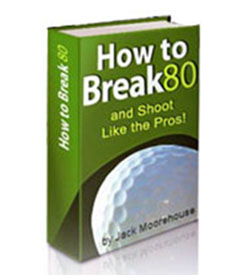
eBook
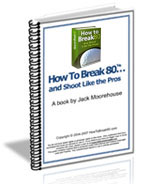
Physical Book

Audio Program
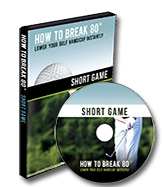
Short Game DVD
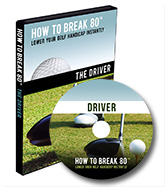
Driver DVD
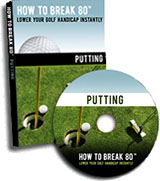
|